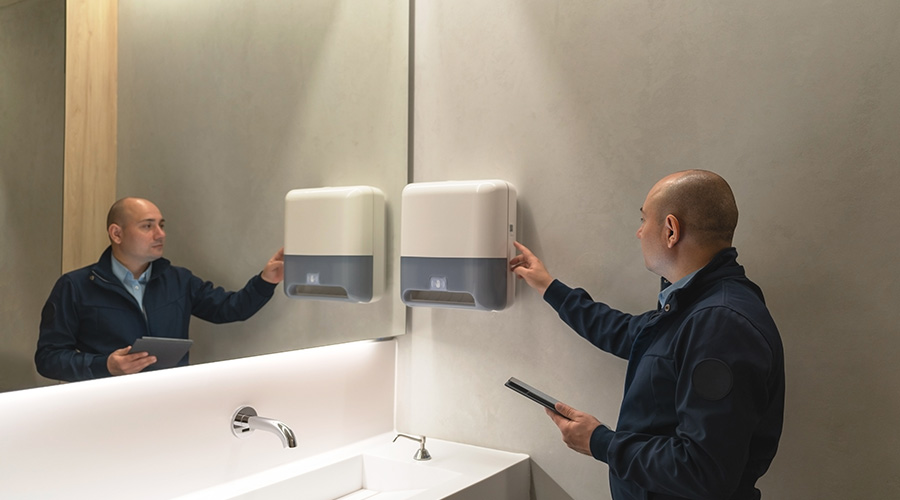Water Jets, Augers Clear Specific Drain Blockages
Once managers have identified the size of the drain and the nature of the clog, they must decide on the appropriate pieces of equipment for clearing different types of blockages. Two of the most common drain-cleaning machines are water jets and cable units, and each is designed to handle specific blockages.
“If you are attempting to clear grease, soap scum or even ice from a water main pipe, a high-pressure water jetter would be a fine selection,” says Frank Intrieri Jr., vice president of sales with Goodway Technologies. “(As) opposed to tree roots being the clog, where selecting a heavy-duty cable drain cleaner with a cutter blade would be more appropriate and effective.”
Managers unfamiliar with drain-cleaning equipment often do not understand the reason a jet is more appropriate than a cable unit for certain applications, for example, so asking manufacturers the right questions during the specification process helps ensure technicians have the proper equipment for the job.
“Grease is sticky, and it sticks to the walls of the pipe,” Silverman says. “The cable won’t clear the walls of the pipe properly. The jet will use the water to flush the line and clear it. It cuts the grease off of the walls and flushes it out. That will be a more appropriate tool to use.”
The cables on drain-cleaning machines are doing most of the work inside the pipe, so it is important for managers to understand different cable compositions.
Renee Brown, product manager with RIDGID, says three different types of cables exist. The differences lie in the way the cables are wound and the structure of their inner core.
“The first is open wind,” Brown says. “These are mainly used on sectional machines to act as an auger. The second is integral wound, which has an inner core, where the wire is wound directly onto the core. This creates a stiff cable to power though obstructions.
“The third is an inner core that floats inside the cable. The floating inner core allows the cable to be more flexible to navigate bends, but once the obstruction is encountered, the cable tightens on the inner core and creates a stiffer cable to power through the blockage.”
Before inner cores became prevalent in drain-cleaning cables, kinks were a major issue, Silverman says. The problem still occurs today, but having the inner core in place improves strength and durability.
“It makes a big difference in preventing the cable from kinking,” Silverman says of tightly wound inner cores. “And if you should ever break the cable, because the wire rope is in there tightly, you can pull the cable back out.”
Cables with inner cores lack the flexibility of a hollow cable, which technicians might use for small drains or minor clogs, such as calcium build-ups in urinals, Silverman says.
“The more flexibility you’ve got, the less durable it’s going to be,” he says. “That’s the trade-off there.”
Related Topics:














